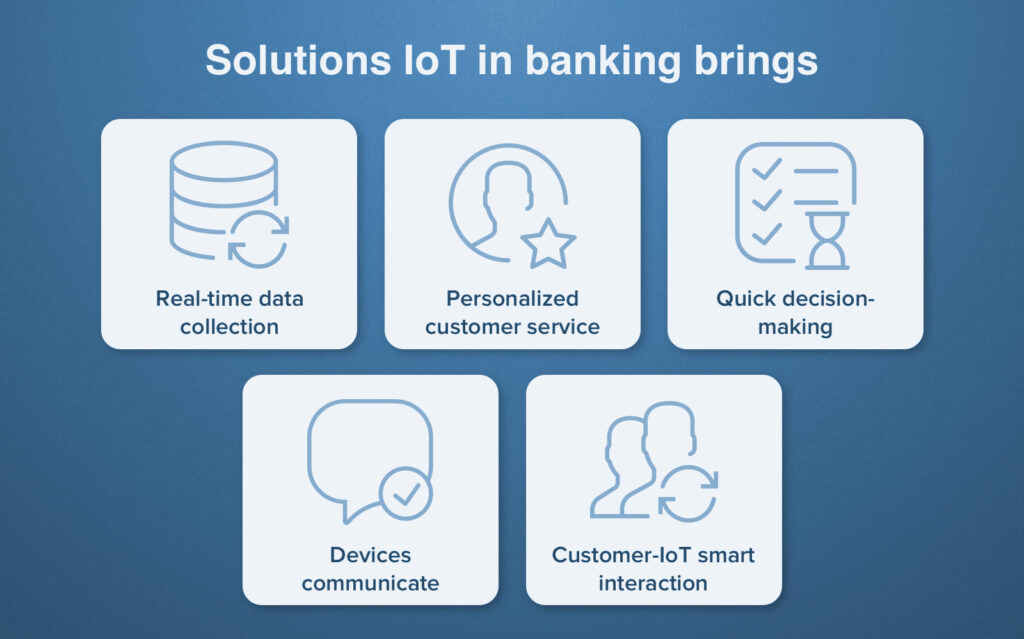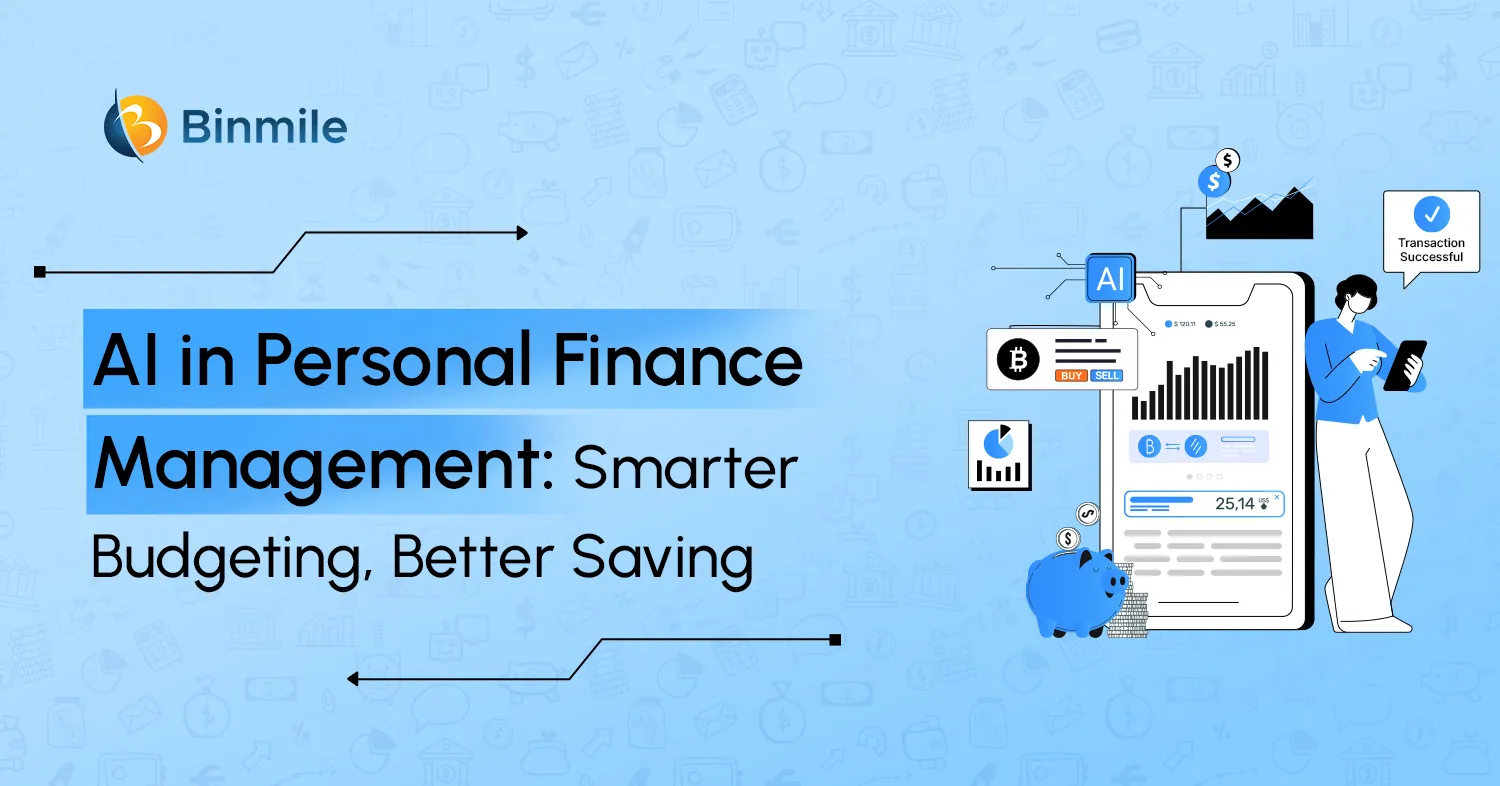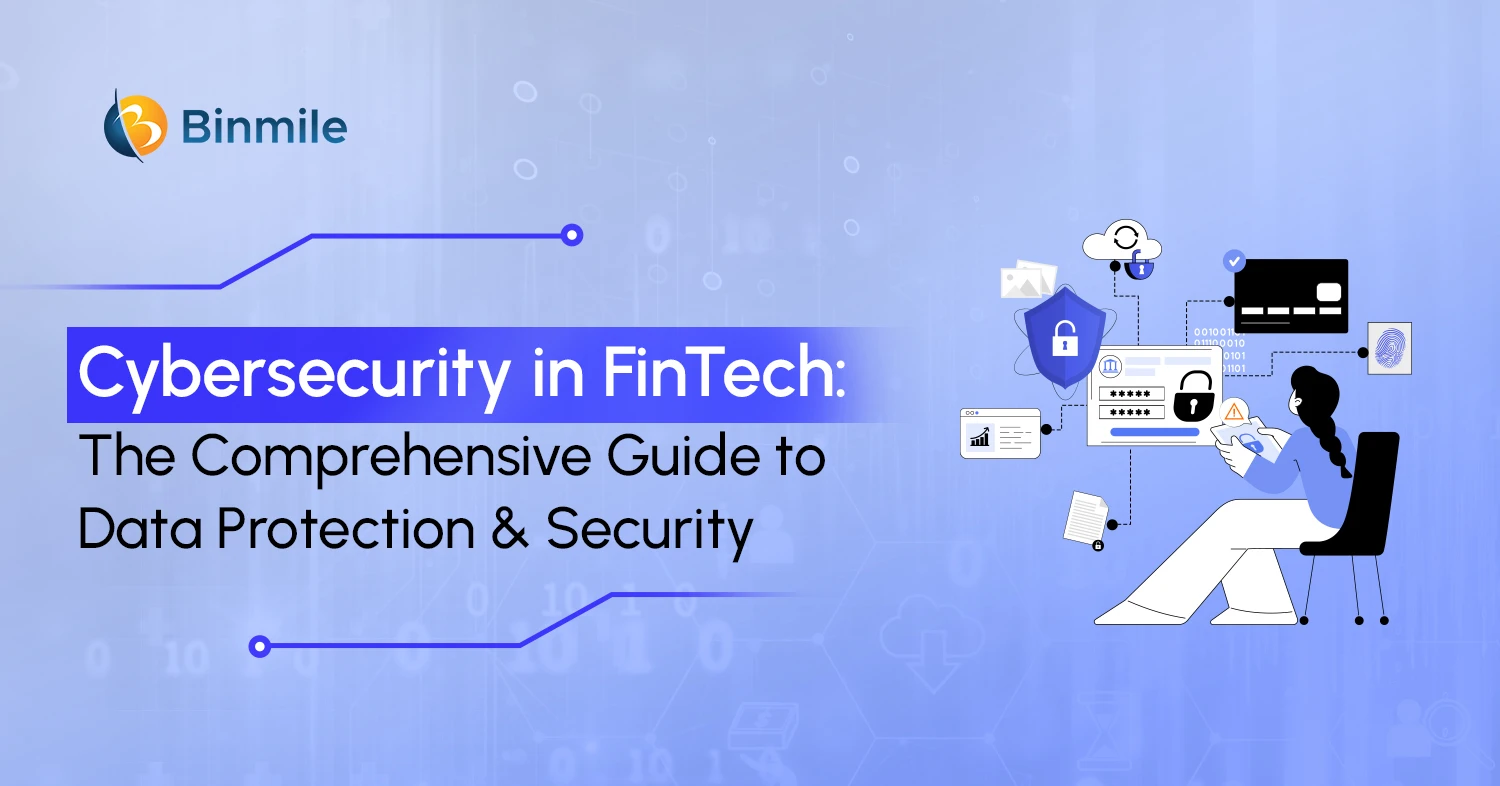IoT, or the Internet of Things, is a key trend guiding the digital transformation plan for organizations and the economy. It provides real-time data and business insights using AI and machine learning, which organizations use to increase efficiency and effectiveness.
The Internet of Things unlocks the potential to harness enormous economic value. According to a McKinsey report, the global IoT market is forecasted to reach a valuation of $12.6 trillion by 2030, including value derived from consumers and users.
While IoT has been quite the game-changer across industries and verticals, its revolutionary impact is particularly evident in the banking and finance sector. As banks and financial institutions embrace IoT, we expect a significant transformation in how banking works – making banking more convenient, efficient, and personalized than ever before. Let us learn how IoT can transform the way of traditional banking and financial businesses.
Benefits of IoT in Banking and Finance
The banking sector is under constant pressure to keep pace with the ever-changing landscape of financial technology. To stay competitive, financial institutions and banks must adopt tools and technologies like data science, AI, and machine learning to enhance customer service, security, and management.
IoT facilitates data collection from various sources to aid in better decision-making. Additionally, it enables the interaction between machines to automate processes with the aim of removing human inefficiencies and errors. Let’s look more closely at the benefits of IoT for the banking and financial sector.

1. Enhanced Decision Making
Banks increasingly rely on artificial intelligence (AI) and machine learning (ML) to make strategic decisions. These technologies help financial institutions analyze big data more effectively and make informed decisions about where to invest resources. IoT supports decision-making by facilitating data collection and analysis to gain valuable insights into customers’ needs.
With technologies like artificial intelligence, machine learning, and Robotic Process Automation (RPA), IoT helps financial institutions make data-driven business decisions. Quantum technology is also beginning to play a role in enhanced decision-making. Faster and more efficient than traditional computers, quantum computers facilitate higher throughput by analyzing more data in a shorter period.
2. Streamlining Finance and Accounting (F&A) Operations
Various departments collaborate in finance and accounting (F&A) processes to collect information efficiently. IoT helps diminish the uncertainty in AI by automating the process, collecting information, and updating to the cloud in real-time.
3. Real-Time Feedback
IoT devices can acquire information from a bank’s user activities. Such data allows the management to better comprehend the financial requirements of various clients. An IoT system can assist in the automatic distribution of useful notifications. For instance, the IoT network can alert a client when their balance is about to close to expire.
IoT helps streamline complex operations, personalize customer interaction and service, and provide necessary financial assistance without human intervention.
4. Identify Fraudulent Activity
Banks and financial institutions are vulnerable to fraud, putting public money and sensitive customer data at risk. In the past, banks have relied on manual processes to identify and prevent fraud detection using ML in finance. However, this is no longer feasible in the era of digital banking. This is where IoT comes in.
Banks can now collect and analyze vast amounts of data in real-time by connecting devices and systems to the internet. The data can be used to identify patterns of fraudulent behavior, flag unusual activity, and ultimately help prevent crime.
In addition, IoT can also be used to improve security across bank branches and ATMs, making it harder for criminals to carry out their activities. As the banking sector continues to digitize, IoT will play an increasingly important role in helping to keep customers safe from fraud.
Real-World Applications of IoT in Banks
With the evolution of technologies used in AI and Exponential AI, the future of the banking industry looks promising. As IoT-led digitization takes shape, the financial software development services industry opens up fresh horizons for innovation that may transform client experiences and produce definite winners and losers.
Some of the use cases of IoT in the finance and banking sector include:
1. IoT-Based Payment Module
IoT-based payment module includes a specific payment device based on a set of rules. IoT payment platforms let users pay bills using a range of gadgets, including smartphones, contactless cards, and smartwatches. Enabling IoT payments can elevate customer experiences and ensure a secure payment process.
2. Customer Service
One of the main applications of IoT technology in banks and financial institutions is customer service. IoT collects user information and keeps track of users’ online behaviors. The gathered data is indispensable for banks to improve customer experience by offering personalized and targeted services.
For instance, banks can leverage data to document and understand the client’s financial needs and offer suggestions related to investments, loans, insurance, and so on.
3. Data Analytics
Banks and financial institutions must leverage data analytics and IoT to remain competitive in today’s digital age. Data analytics can help organizations identify trends, predict customer behavior, and optimize operations. IoT can provide real-time data that can be processed and analyzed to make quicker and better decisions. Together, data analytics and IoT help banks and financial institutions improve customer experience, reduce costs, and increase revenue.
For example, banks can use data analytics to identify customer spending patterns and offer targeted products and services. Financial institutions use IoT devices to track assets and inventory in real time, reducing the need for manual reconciliation. By harnessing the power of data analytics and IoT, banks and financial institutions can remain agile and adaptive in the fast-evolving digital landscape.
4. Improved Security
In recent years, banks have been after IT firms for more & more resources for IoT development solutions to improve security. Banks can collect real-time data to identify potential threats by installing sensors and cameras throughout their premises. IoT-enabled security systems can also be set up to automatically trigger alarms in the event of an intrusion or suspicious activity. Security personnel can quickly respond to incidents by remotely monitoring bank premises.
IoT-based security solutions offer several benefits for banks and financial institutions. IoT-based security systems can help banks save money and safeguard their assets by reducing the likelihood of theft and vandalism. In addition, real-time data and alerts from IoT-based solutions enable banks to improve response times and protect customers and employees better.
5. Auditing
Auditing is crucial in the current banking landscape. Most banks have quickly adopted the Internet of Things (IoT) to improve their auditing processes. By outfitting their branches with sensors and connected devices, banks can collect a wealth of data to identify red flags and prevent fraud. For instance, if a sensor detects an unusual pattern of activity in a teller’s station, it can trigger an alert that will prompt an investigation.
In addition, by monitoring employee badge swipes, banks can ensure that employees follow the correct procedures. The IoT also finds use in tracking cash levels in ATMs to ensure there is no cash shortage. Ultimately, the goal is to make auditing more efficient and effective while reducing the incidence of fraud.
6. Smart Collateral Management
IoT enables banks to efficiently manage a customer’s mortgaged assets, including houses and cars, and monitor their health. Commercial or SME customers may obtain minor financing by pledging valuables, cars, or manufacturing equipment as collateral. The financing request and the ownership transfer may be automatic and entirely digital, aligning with the digital transformation in commercial payment processes. With the help of digital identity for people and things, it is possible to quickly transfer ownership of an item. Therefore, the bank can approve the loan immediately and track the collateral status in real-time without needing to take possession of the asset in person.
Also Read: Key Consideration to Develop an IoT App
Conclusion
The Internet of Things (IoT) is poised to revolutionize the banking sector. By connecting devices and objects to the internet, IoT has the potential to overhaul traditional banking systems and processes completely. As more and more customers switch to contactless, digital banking, it is more important than ever for banks to provide services and products on the channels their customers prefer.
Binmile is a one-stop platform offering innovative and custom software development solutions to improve business efficiencies through automation. By leveraging the power of business transformation using new technology, Binmile helps clients accelerate their business with intelligent products and services.
Automate now for a brighter future with Binmile’s automation services!
Frequently Asked Questions
Smart Banking refers to the use of innovative technologies, such as artificial intelligence (AI), machine learning (ML), data analytics, and mobile applications, to provide personalized, efficient, and convenient banking services to customers. It involves leveraging digital solutions to enhance the overall banking experience, streamline processes, and improve financial management.
Future trends in Smart Banking include:
- Continued adoption of AI and ML technologies for more advanced chatbots, predictive analytics, and personalized banking experiences.
- Expansion of biometric authentication methods and the integration of biometric data with other security layers for enhanced identity verification.
- Integration of augmented reality (AR) and virtual reality (VR) technologies for immersive banking experiences and virtual branch visits.
- Adoption of open banking standards and APIs to facilitate seamless integration with third-party financial services and enable greater collaboration and innovation in the banking industry.
- Increased focus on cybersecurity measures and data privacy regulations to protect customer data and ensure trust in Smart Banking solutions.
AI Smart Banking refers to the integration of Artificial Intelligence (AI) technologies into traditional banking systems to enhance operational efficiency, customer service, and decision-making processes. By leveraging AI algorithms, machine learning, and data analytics, smart banking solutions offer personalized services, automate routine tasks, and provide actionable insights to both customers and financial institutions.
IoT in Finance refers to the integration of Internet of Things (IoT) devices and technologies into financial services and operations to enhance efficiency, security, and customer experience. It involves the use of connected devices, sensors, and data analytics to collect, analyze, and utilize real-time financial and transactional data for various purposes within the financial industry.










